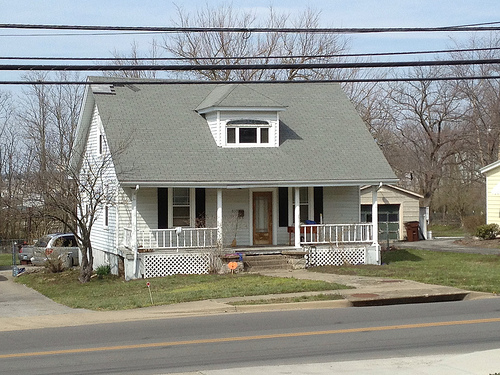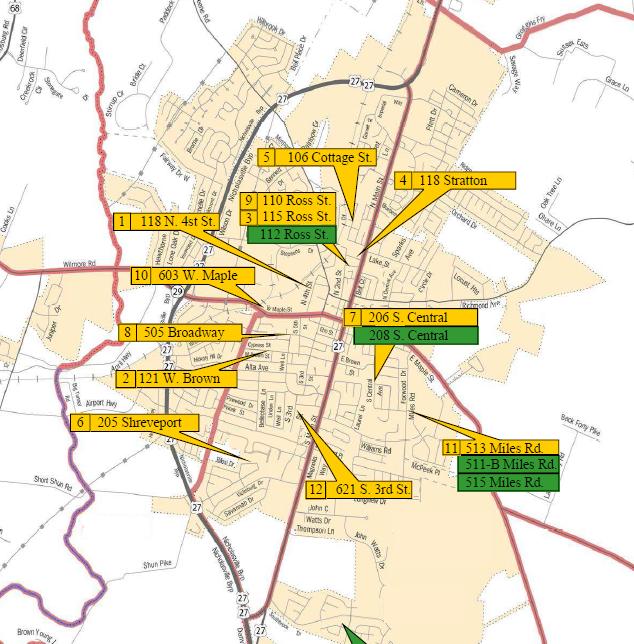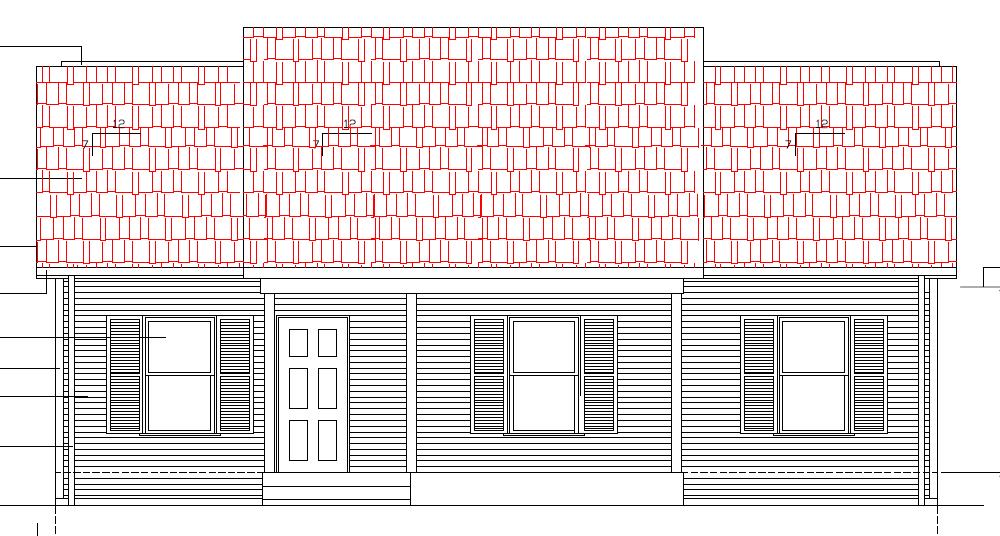 |
| 603 West Maple Street – Nicholasville, Ky. |
The evidence is not in dispute: home ownership results in stronger communities and homeowners are more likely to improve their properties than are renters (or landlords). But in communities across Kentucky and the country, some below-median income homeowners simply cannot afford to make necessary (and expensive) repairs to upgrade their homes to meet current code.
 |
| Map of Nicholasville’s CDBG Sites Source: Kriss Lowry, Project Manager |
Last summer, Nicholasville was awarded a community development block grant (CDBG). This is a federally funded grant through the Dept. of Housing and Urban Development. Nicholasville’s scattered-site housing project is underway including upgrades to several owner-occupied single-family homes where eligibility criteria is met. Eligible properties must need at least $25,000 in qualified repairs. Admittedly, it is more ‘cost effective’ to demolish and build rather than rehab some houses.
But what considerations occur when one of the eligible properties is an older, potentially ‘historic’, property?
One such property was located at 603 West Maple Street – a couple blocks to the west of the Nicholasville Historic District, an area listed on the National Register of Historic Places. The existing 603 is believed to have been constructed about 90-95 years ago, thus ca. 1920. In 1920, the population of Nicholasville was just in excess of 2,700 which is less than one-tenth of the city’s 2010 population.
The home was a simple farmhouse: one-and-a-half story wood frame. Atop a full 8′ concrete basement is an 896 square foot first floor and 640 sq. ft. on the second. A covered porch spans the length of the house’s front. Although the wood frame structure is simple in design, it was emblematic of the region’s farmhouse architecture from the period. Furthermore, 603 added character to the streetscape of West Maple Street.
Even so, the City determined that the property is not historic. As such, demolish of the 90+ year old 603 occurred earlier this spring. Presently, a new single story for the existing homeowner is under construction. A rendering of the new 603 appears below.
 |
| Front Elevation of the proposed 603 West Maple Source: Kriss Lowry, Project Manager. |
Immediately noticeable is the absence of both the full length front porch and the second story dormer window, both of which added much character to 603 and to the neighborhood. The non-descript, vinyl-clad single-story replacement lacks character or interest and it is unlikely to survive nearly a century as did its predecessor.
The need to provide affordable housing is without question, but that need must be balanced with the the preservation of a community’s fabric. The same is true of economic growth and other governmental projects. On a federal level, all projects receiving federal funds must undergo a section 106 review to determine if alternatives exist which would be more suitable to historic preservation. To my knowledge, no analogous requirement exists on the state level.
When an older building, however, cannot be salvaged it is imperative that we document the loss as best as possible. Additionally, parts of an older structure can be reclaimed for future use in the replacement structure or in other properties. Solid wood doors, windows, and flooring are just a few examples. Companies exists solely for the purpose of salvaging these historic resources and non-profits like Habitat for Humanity have ReStores which make these items available.
For historic preservationists, not every battle can be won. And it seems many properties, like 603, are not even part of the fight. But it is always worth saving what we can when we can.
Sources: HUD (Linking HP to CDBG); Jessamine-Journal; Jessamine PVA; Kriss Lowry (project bid, project floorplans, project guidelines,
